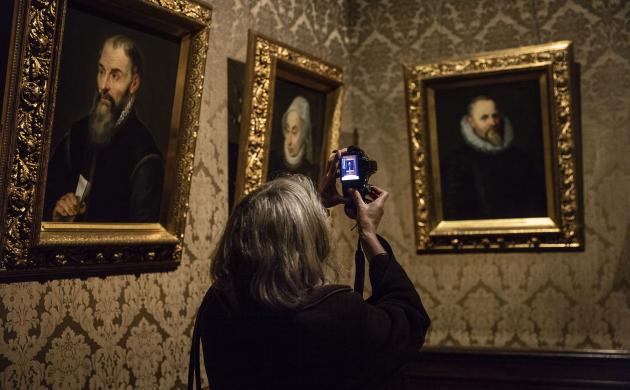Every year during the Christmas period, the Museum displays a beautiful 18th-century Neapolitan nativity scene.
Theatrical spectacle
The scene consists of 61 figures. The birth of Christ is set in an impressive Roman ruin with different levels and numerous colourful characters. In addition to the familiar Biblical characters, there is a vast choir of angels, a procession of exotic figures and numerous village and city dwellers. The Neapolitan nativity scene is a showpiece and a theatrical spectacle all in one. It is a lively and cheerful presentation of the Christmas story with a great sense of expression and countless details. It was worked on by woodcarvers, goldsmiths and silversmiths, potters and tailors.
With the star as a guide
The Neapolitan nativity scene recalls the paintings The Adoration of the Shepherds by Gerard Seghers and The Moorish King by Peter Paul Rubens. The story of the three kings is also interwoven with the history of the Moretus family. Jan I Moretus called his three eldest sons Gaspar, Melchior and Balthasar, after the three wise men. These names recur many times in the family’s history. The emblem of Balthasar I Moretus, the third head of the printing business, carries the motto Stella Duce, ‘With the star as a guide’.

